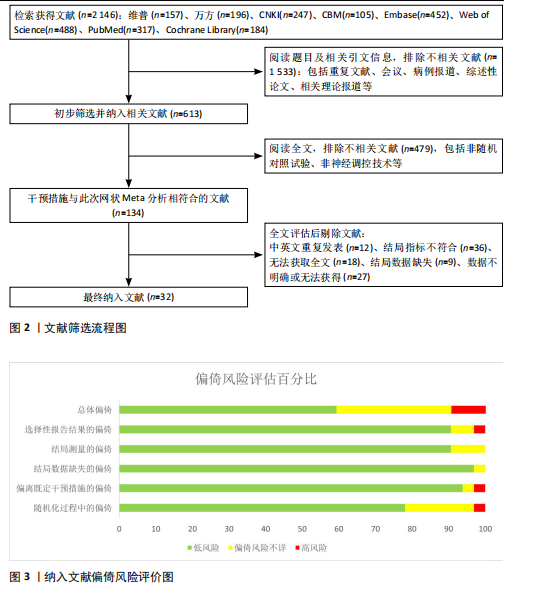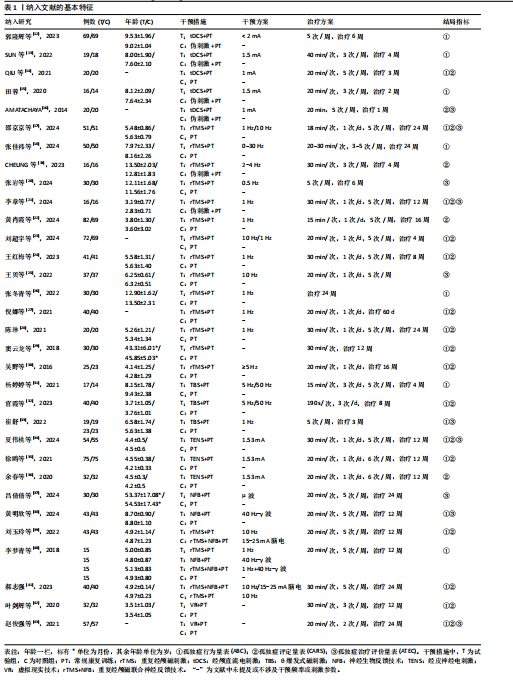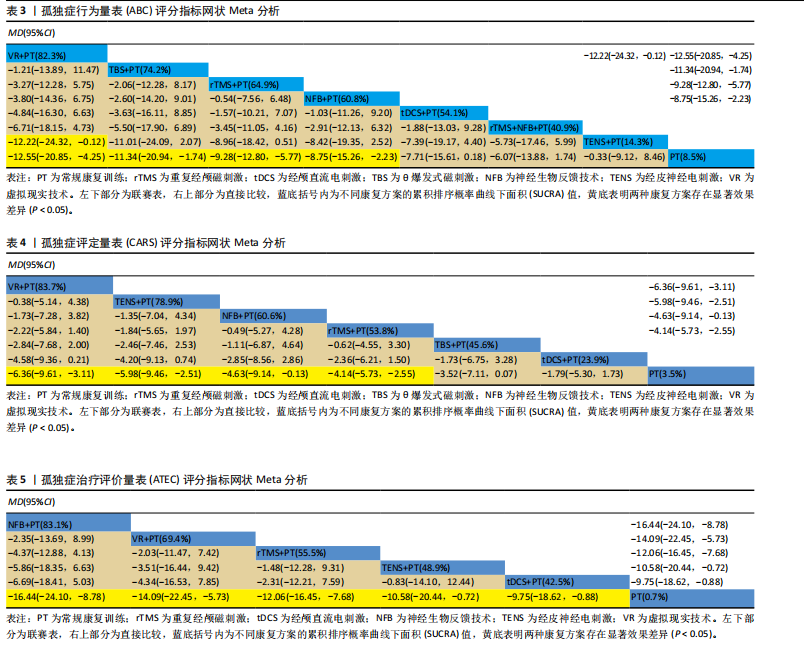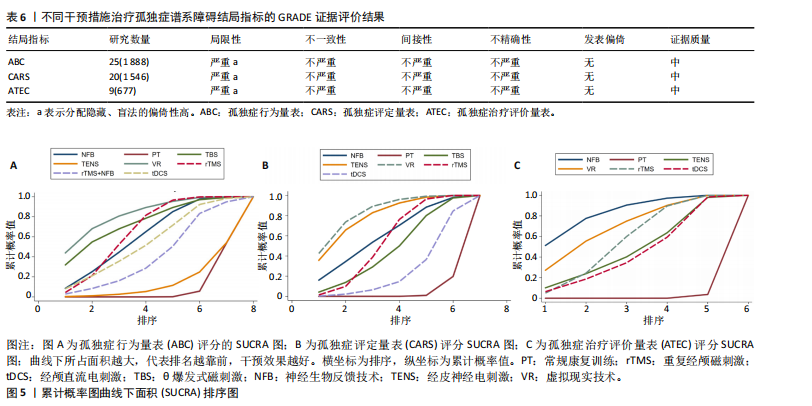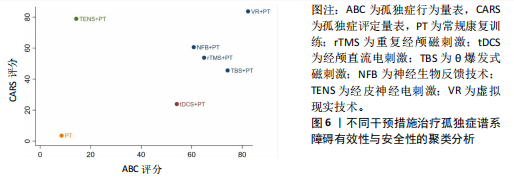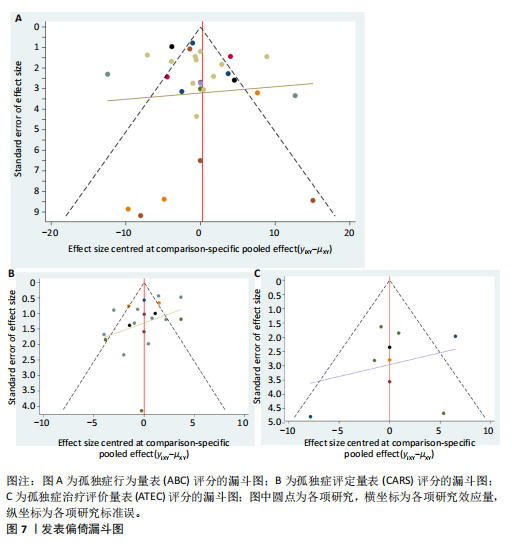[1] HIROTA T, KING BH. Autism Spectrum Disorder: A Review. JAMA. 2023;329(2): 157-168.
[2] SALARI N, RASOULPOOR S, RASOULPOOR S, et al. The global prevalence of autism spectrum disorder: a comprehensive systematic review and meta-analysis. Ital J Pediatr. 2022;48(1):112.
[3] TALANTSEVA OI, ROMANOVA RS, SHURDOVA EM, et al. The global prevalence of autism spectrum disorder: A three-level meta-analysis. Front Psychiatry. 2023;14:1071181.
[4] MAENNER MJ, WARREN Z, WILLIAMS AR, et al. Prevalence and Characteristics of Autism Spectrum Disorder Among Children Aged 8 Years - Autism and Developmental Disabilities Monitoring Network, 11 Sites, United States, 2020. MMWR Surveill Summ. 2023;72(2):1-14.
[5] ZHOU H, XU X, YAN W, et al. Prevalence of Autism Spectrum Disorder in China: A Nationwide Multi-center Population-based Study Among Children Aged 6 to 12 Years. Neurosci Bull. 2020;36(9):961-971.
[6] AISHWORIYA R, VALICA T, HAGERMAN R, et al. An Update on Psychopharmacological Treatment of Autism Spectrum Disorder. Neurotherapeutics. 2022;19(1):248-262.
[7] LAMANNA J, MELDOLESI J. Autism Spectrum Disorder: Brain Areas Involved, Neurobiological Mechanisms, Diagnoses and Therapies. Int J Mol Sci. 2024;25(4): 2423.
[8] SMITH JR, DISALVO M, GREEN A, et al. Treatment Response of Transcranial Magnetic Stimulation in Intellectually Capable Youth and Young Adults with Autism Spectrum Disorder: A Systematic Review and Meta-Analysis. Neuropsychol Rev. 2023;33(4):834-855.
[9] AHN E, KANG H. Concepts and emerging issues of network meta-analysis. Korean J Anesthesiol. 2021;74(5):371-382.
[10] DSM-5: diagnosis of mental disorders. Lancet. 2010;376(9739):390.
[11] 刘津池,刘畅,华成舸.随机对照试验偏倚风险评价工具RoB2(2019修订版)解读[J].中国循证医学杂志,2021,21(6):737-744.
[12] 郭隆辉,张梦媛,金红芳,等.阳极经颅直流电刺激联合感觉统合训练对自闭症儿童情绪及认知的影响观察[J].临床误诊误治,2023,36(3):100-104.
[13] SUN C, ZHAO Z, CHENG L, et al. Effect of Transcranial Direct Current Stimulation on the Mismatch Negativity Features of Deviated Stimuli in Children With Autism Spectrum Disorder. Front Neurosci. 2022; 16:721987.
[14] QIU J, KONG X, LI J, et al. Transcranial Direct Current Stimulation (tDCS) over the Left Dorsal Lateral Prefrontal Cortex in Children with Autism Spectrum Disorder (ASD). Neural Plast. 2021;2021:6627507.
[15] 田蓉.基于事件相关电位探究经颅直流电刺激对自闭症儿童的神经调控效应[D].天津:天津体育学院,2020.
[16] AMATACHAYA A, AUVICHAYAPAT N, PATJANASOONTORN N, et al. Effect of anodal transcranial direct current stimulation on autism: a randomized double-blind crossover trial. Behav Neurol. 2014;2014:173073.
[17] 邵京京,吴小迪,朱敏.重复经颅磁刺激联合沙盘游戏对自闭症谱系障碍患儿自闭程度及行为能力的影响[J].成都医学院学报,2024,19(4):697-700.
[18] 张佳祎,尚清,李海贝,等.重复经颅磁刺激联合听觉统合训练在孤独症患儿中的应用效果[J].中国民康医学,2024, 36(21):80-83.
[19] CHEUNG T, LI TMH, LAM JYT, et al. Effects of transcranial pulse stimulation on autism spectrum disorder: a double-blind, randomized, sham-controlled trial. Brain Commun. 2023;5(5):fcad226.
[20] 张岩,闵国庆,胡林玲,等.重复经颅磁刺激联合综合康复训练在自闭症患儿中的应用评价[J].现代医学与健康研究电子杂志,2024,8(11):20-22.
[21] 李章,吕静,赵晓科,等.经颅磁刺激联合康复训练在孤独症谱系障碍儿童中的疗效及低频振幅分析研究[J].中华全科医学,2024,22(7):1222-1226.
[22] 黄肖霞,温慧玲,凡伟,等.重复经颅磁刺激治疗孤独症谱系障碍患儿行为问题的临床效果对照研究[J].中国妇幼保健, 2024,39(9):1608-1611.
[23] 刘超宇,胡继红,何金华,等.rTMS联合综合康复干预对孤独症谱系障碍患儿临床症状及语言功能康复的影响[J].中国听力语言康复科学杂志,2024,22(2):221-224.
[24] 王红梅,吴晓静,李彩云,等.重复经颅磁刺激在治疗孤独症谱系障碍儿童康复中的应用[J].实用中西医结合临床,2023, 23(13):76-79.
[25] 王贝,倪娜.经颅重复高频磁刺激联合康复训练治疗孤独症谱系障碍患儿的疗效分析[J].现代医学与健康研究电子杂志, 2022,6(19):11-14.
[26] 张冬青,刘莎莎,郭洪科,等.低频重复经颅磁刺激对孤独症谱系障碍儿童认知和执行功能的影响[J].空军医学杂志, 2022,38(2):134-138.
[27] 倪娜,刘晓鸣.低频经颅磁刺激结合康复训练治疗儿童孤独症合并睡眠障碍[J].长春中医药大学学报,2021,37(6):1379-1382.
[28] 陈琳.重复经颅磁刺激联合综合康复训练对孤独症患儿的孤独症行为与认知功能的影响[J].现代医学与健康研究电子杂志,2021,5(6):122-124.
[29] 窦云龙,张莹莹,雍曾花,等.超低频经颅磁刺激联合康复训练对孤独症谱系障碍儿童的疗效[J].中国康复,2018,33(5): 399-401.
[30] 吴野,李新剑,金鑫,等.高频经颅磁刺激背外侧前额叶联合康复训练对孤独症谱系障碍儿童的治疗作用[J].中国医药导报,2016,13(27):119-122.
[31] 杨婷婷,李丹丹,李红,等.间断性θ爆发式磁刺激对自闭症谱系障碍儿童疗效分析[J].中国神经精神疾病杂志,2021, 47(1):23-26.
[32] 官霞,李伟,王欣刚.间断性θ爆发式磁刺激联合常规康复训练、沙盘游戏在自闭症谱系障碍儿童中的应用效果[J].临床医学研究与实践,2023,8(36):25-28.
[33] 崔舒.连续θ爆发式经颅磁刺激治疗孤独症谱系障碍儿童临床疗效与安全性研究[D].合肥:安徽医科大学,2022.
[34] 夏伟桃,区肇真,何海燕,等.穴位电刺激结合应用行为分析疗法对孤独症谱系障碍儿童的疗效观察[J].湖南师范大学学报(医学版),2024,21(4):123-127.
[35] 徐鸥,齐培,祝绮莎.穴位电刺激治疗孤独症谱系障碍儿童行为问题的临床疗效[J].中国现代医生,2021,59(13):99-102.
[36] 余春,李博霞,赵宁侠,等.穴位电刺激结合康复教育改善孤独症谱系障碍儿童行为问题的临床研究[J].中国医药导刊, 2020,22(3):166-169.
[37] 吕倩倩,王萌萌,吴易凌,等.早期介入丹佛模式基础上联合神经反馈训练对孤独症谱系障碍儿童效果的随机对照试验[J].中国康复理论与实践,2024,30(8):914-921.
[38] 黄明欣,于情,李圆圆.脑电生物反馈联合LSP干预训练在高功能孤独症谱系障碍患儿中的前瞻性随机对照研究[J].中国当代儿科杂志,2024,26(10):1066-1071.
[39] 刘玉玲,黄蓉.重复经颅磁刺激联合脑电生物反馈治疗在孤独症患儿康复治疗中的应用[J].保健医学研究与实践,2022, 19(5):70-73.
[40] 李梦青,姜志梅,李雪梅,等.rTMS结合脑电生物反馈对孤独症谱系障碍儿童刻板行为的疗效[J].中国康复,2018,33(2): 114-117.
[41] 郝志强.重复经颅磁刺激联合脑电生物反馈治疗在孤独症患儿康复治疗中的应用[J].中文科技期刊数据库(全文版)医药卫生,2024(1):196-199.
[42] 叶剑辉,宋清海,赵波涛.促进孤独症谱系障碍儿童社交技能的虚拟人物互动系统在孤独症谱系障碍患儿临床治疗中的应用[J].中国妇幼保健,2020,35(16):3004-3006.
[43] 赵俊强,张欣欣,卢一,等.基于虚拟现实技术的孤独症谱系障碍患儿核心症状家庭康复干预效果研究[J].护理研究, 2021,35(23):4214-4217.
[44] WEI QH, XIE XF, DAI JJ, et al. Value of autism screening checklists in the early identification of autism spectrum disorder. Zhongguo Dang Dai Er Ke Za Zhi. 2021;23(4):343-349.
[45] MOON SJ, HWANG JS, SHIN AL, et al. Accuracy of the Childhood Autism Rating Scale: a systematic review and meta-analysis. Dev Med Child Neurol. 2019; 61(9):1030-1038.
[46] EAVES RC, MILNER B. The criterion-related validity of the Childhood Autism Rating Scale and the Autism Behavior Checklist. J Abnorm Child Psychol. 1993;21(5):481-491.
[47] NETSON R, SCHMIEDEL FUCKS A, SCHMIEDEL SANCHES SANTOS A, et al. A Comparison of Parent Reports, the Mental Synthesis Evaluation Checklist (MSEC) and the Autism Treatment Evaluation Checklist (ATEC), with the Childhood Autism Rating Scale (CARS). Pediatr Rep. 2024;16(1):174-189.
[48] ANDREU-SÁNCHEZ C, MARTÍN-PASCUAL MÁ, GRUART A, et al. Differences in Mu rhythm when seeing grasping/motor actions in a real context versus on screens. Sci Rep. 2024;14(1):22921.
[49] CHU L, SHEN L, MA C, et al. Effects of a Nonwearable Digital Therapeutic Intervention on Preschoolers With Autism Spectrum Disorder in China: Open-Label Randomized Controlled Trial. J Med Internet Res. 2023;25:e45836.
[50] WIEBE A, KANNEN K, SELASKOWSKI B, et al. Virtual reality in the diagnostic and therapy for mental disorders: A systematic review. Clin Psychol Rev. 2022;98:102213.
[51] YANG X, WU J, MA Y, et al. Effectiveness of Virtual Reality Technology Interventions in Improving the Social Skills of Children and Adolescents With Autism: Systematic Review. J Med Internet Res. 2025;27:e60845.
[52] DA SILVA SOARES R JR, RAMIREZ-CHAVEZ KL, TUFANOGLU A, et al. Cognitive Effort during Visuospatial Problem Solving in Physical Real World, on Computer Screen, and in Virtual Reality. Sensors (Basel). 2024;24(3):977.
[53] KLAVINA A, PÉREZ-FUSTER P, DAEMS J, et al. The use of assistive technology to promote practical skills in persons with autism spectrum disorder and intellectual disabilities: A systematic review. Digit Health. 2024;10:20552076241281260.
[54] ZHAO J, ZHANG X, LU Y, et al. Virtual reality technology enhances the cognitive and social communication of children with autism spectrum disorder. Front Public Health. 2022;10:1029392.
[55] KODAK T, BERGMANN S. Autism Spectrum Disorder: Characteristics, Associated Behaviors, and Early Intervention. Pediatr Clin North Am. 2020;67(3):525-535.
[56] HOCKING DR, ARDALAN A, ABU-RAYYA HM, et al. Feasibility of a virtual reality-based exercise intervention and low-cost motion tracking method for estimation of motor proficiency in youth with autism spectrum disorder. J Neuroeng Rehabil. 2022;19(1):1.
[57] DATKO M, PINEDA JA, MÜLLER RA. Positive effects of neurofeedback on autism symptoms correlate with brain activation during imitation and observation. Eur J Neurosci. 2018;47(6):579-591.
[58] SALEEM S, HABIB SH. Neurofeedback Recuperates Cognitive Functions in Children with Autism Spectrum Disorders (ASD). J Autism Dev Disord. 2024;54(8):2891-2901.
[59] KANG J, LV S, LI Y, et al. The effects of neurofeedback training on behavior and brain functional networks in children with autism spectrum disorder. Behav Brain Res. 2025;481:115425.
[60] COLOMAR L, SAN JOSÉ CÁCERES A, ÁLVAREZ-LINERA J, et al. Role of cortical excitatory/inhibitory imbalance in autism spectrum disorders from a symptom severity trajectories framework: a study protocol. BMC Psychiatry. 2023;23(1):213.
[61] UZUNOVA G, PALLANTI S, HOLLANDER E. Excitatory/inhibitory imbalance in autism spectrum disorders: Implications for interventions and therapeutics. World J Biol Psychiatry. 2016;17(3):174-186.
[62] ABUJADI C, CROARKIN PE, BELLINI BB, et al. Intermittent theta-burst transcranial magnetic stimulation for autism spectrum disorder: an open-label pilot study. Braz J Psychiatry. 2018;40(3):309-311.
[63] NAKASHIMA S, KOEDA M, IKEDA Y, et al. Effects of anodal transcranial direct current stimulation on implicit motor learning and language-related brain function: An fMRI study. Psychiatry Clin Neurosci. 2021;75(6):200-207.
[64] MADDALON L, MINISSI ME, PARSONS T, et al. Exploring Adaptive Virtual Reality Systems Used in Interventions for Children With Autism Spectrum Disorder: Systematic Review. J Med Internet Res. 2024;26:e57093.
[65] GAYLE RI, VALENTINO AL, FUHRMAN AM. Virtual Reality Training of Safety and Social Communication Skills in Children with Autism: An Examination of Acceptability, Usability, and Generalization. Behav Anal Pract. 2024;18(1):179-195.
|
